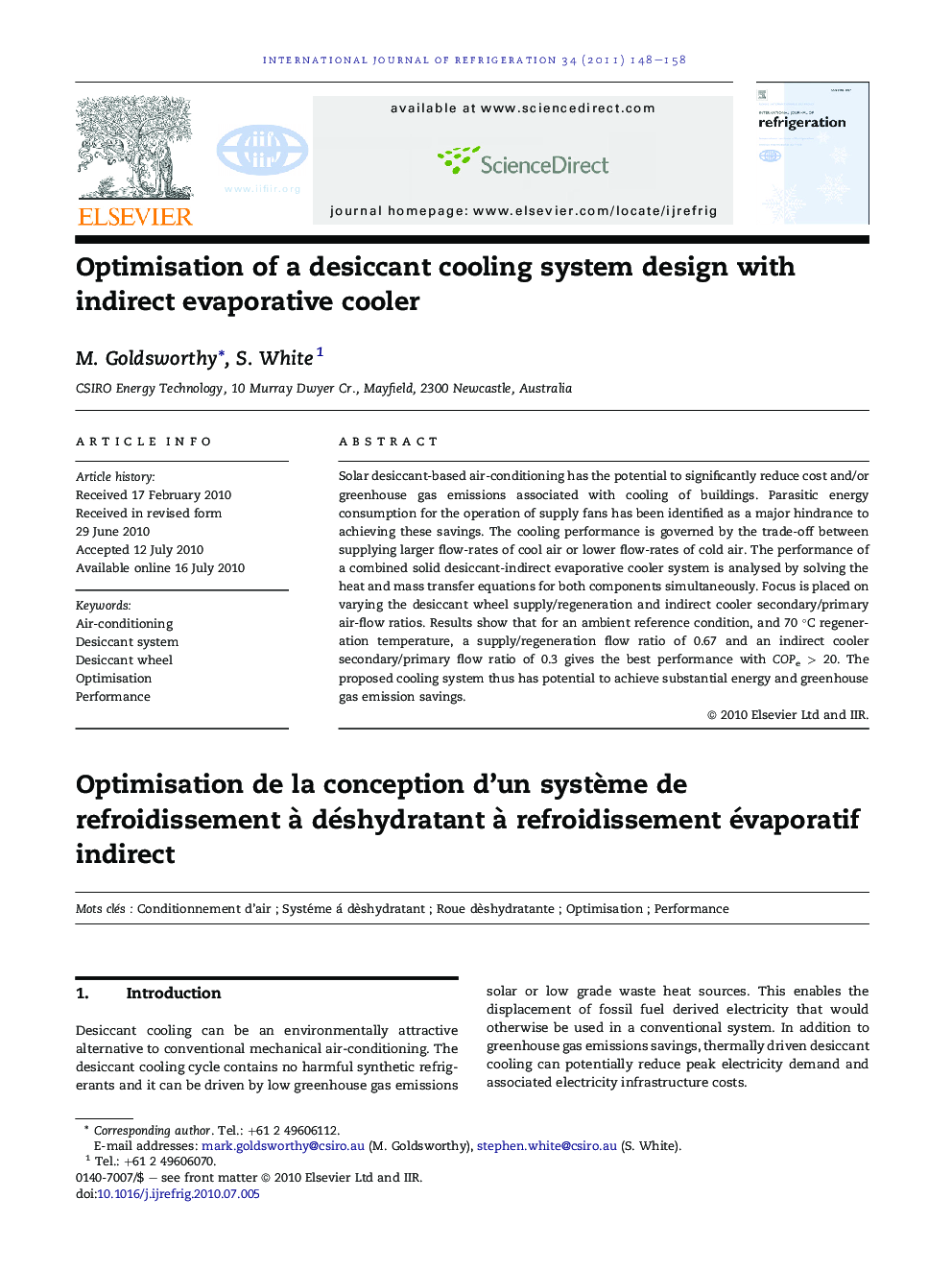| Article ID | Journal | Published Year | Pages | File Type |
|---|---|---|---|---|
| 787287 | International Journal of Refrigeration | 2011 | 11 Pages |
Solar desiccant-based air-conditioning has the potential to significantly reduce cost and/or greenhouse gas emissions associated with cooling of buildings. Parasitic energy consumption for the operation of supply fans has been identified as a major hindrance to achieving these savings. The cooling performance is governed by the trade-off between supplying larger flow-rates of cool air or lower flow-rates of cold air. The performance of a combined solid desiccant-indirect evaporative cooler system is analysed by solving the heat and mass transfer equations for both components simultaneously. Focus is placed on varying the desiccant wheel supply/regeneration and indirect cooler secondary/primary air-flow ratios. Results show that for an ambient reference condition, and 70 °C regeneration temperature, a supply/regeneration flow ratio of 0.67 and an indirect cooler secondary/primary flow ratio of 0.3 gives the best performance with COPe > 20. The proposed cooling system thus has potential to achieve substantial energy and greenhouse gas emission savings.
